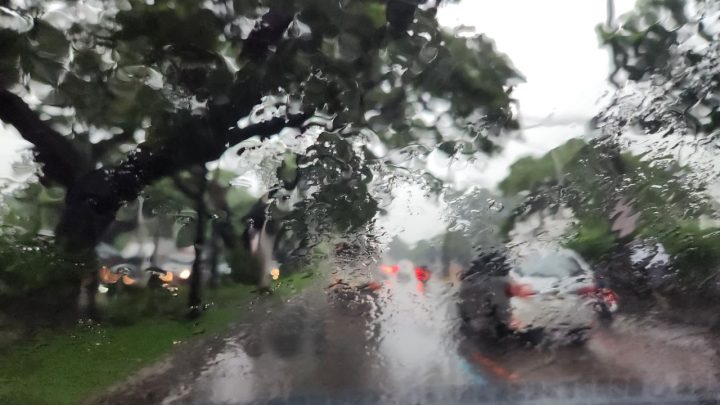
No guide can be so “ultimate”, but for your benefit, our dear readers, we’ve compiled a list of 8 safety tips that you can keep in mind and use when it starts to rain. Driving as it is already poses inherent dangers, but these are multiplied in the event of a downpour. To help keep your wits about you, here are some things that we truly believe can help you, your passengers, and everyone else around you.
Safety Tips for driving in the rain
Table of Contents
Make sure that your vehicle is in good, running condition

Specifically, make sure that your lights and your wipers are in good, working order. Visibility is greatly reduced by a downpour, so to help you along, you’ll need to have working headlights, tail and brake lights, as well as wipers.
Make sure that your headlights are on Low to avoid blinding oncoming vehicles. The use of front and rear foglights are not exactly a bad thing in strong rains, but if visibility is not that bad, then don’t use them if you can help it.
As for wipers, make sure that they can still effectively wipe off your windshield and backglass (if you have a wiper in the rear) to give you a clear sight of what’s in front and behind you. A simple check will show you cracks or tears, and if you find any, then that’s a good sign to replace your wiper blades.
These notwithstanding, of course, this safety tip is also a reminder that you’ll have to make sure that your engine, tires, and brakes are all working properly and are in safe, operable states.
Maintain a safe distance from other vehicles
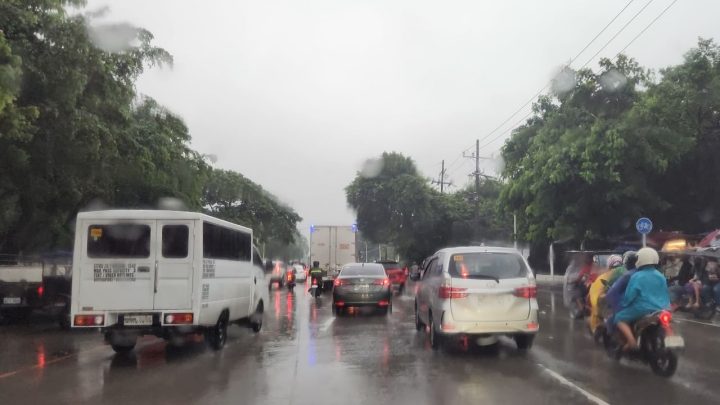
Tailgating is one of the worst things you can do in a downpour. This safety tip cannot be downplayed and it is important that you keep a safe distance between yourself and the vehicle in front of you, and the vehicle beside you as well. Keep in mind that brake distance is greatly increased by wet roads, and should you find yourself at an abrupt stop, you wouldn’t want to end up hitting another vehicle.
Consciously keeping a safe distance also gives others around you more room to do so themselves, and could help them avoid coming into contact with you, too. For yourself, you’ll have the space to properly maneuver yourself out of a slippery situation, and that’s a great thing to have, whether on a dry or wet road.
Avoid speeding
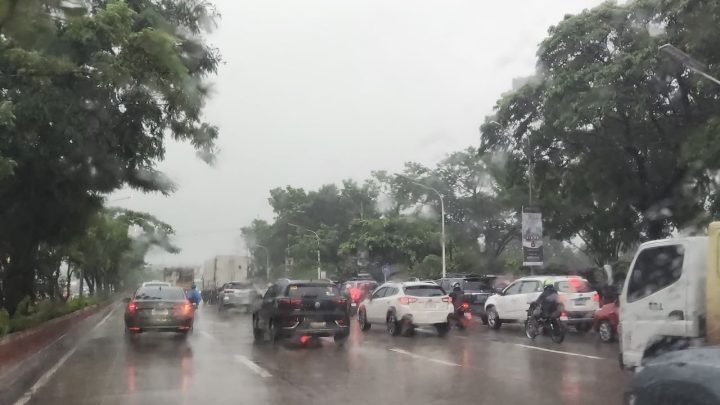
This is in line with the item above. As we mentioned, getting your car to stop quicker and at a short distance are both hampered by the rain. The wet surface reduces a tire’s contact patch on the ground, and with that reduced traction, the distance that you would normally cover when braking on dry roads is significantly increased when it rains.
Without adequate distance, and with a high-enough speed, you can only imagine what impending accident is about to happen, right? We’ll leave that to your imagination, but make sure you’re not stepping on the accelerator while you’re at it.
Avoid puddles, standing water, and if you can help it, an actual flood
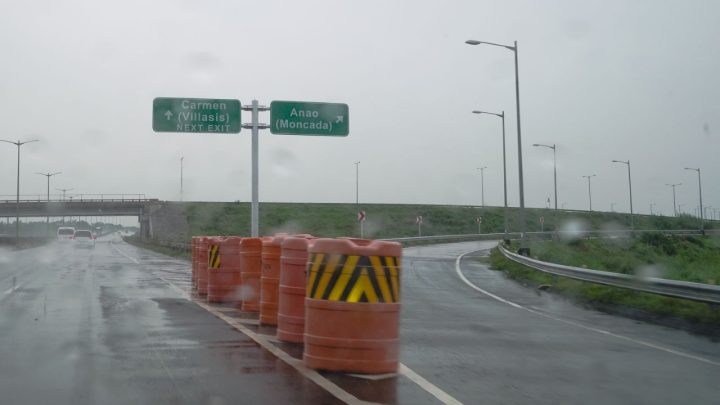
This safety tip should be top-of-mind when driving in the rain. If you see a puddle or water accumulated by the gutter, or God-forbid an actual flood, then it’s always the best choice to avoid them. That is IF you can. Obviously, you’ll be driving at this time, and if the puddles and standing water are not avoidable, your drive can be a lot safer if you’ve so far followed our tips on avoiding speeding and keeping a safe distance between you and other vehicles.
As for floods, whether you’re driving a new vehicle or not, or if it’s built for off-roading or not, let’s try not to tempt fate. Okay, perhaps those with capable rigs will totally ignore this part, but if your truck can do it, then major props to you!
If you’re in a car or on a motorcycle, this is a no-brainer, okay? Again, DO NOT tempt fate.
Know your role, err, roads
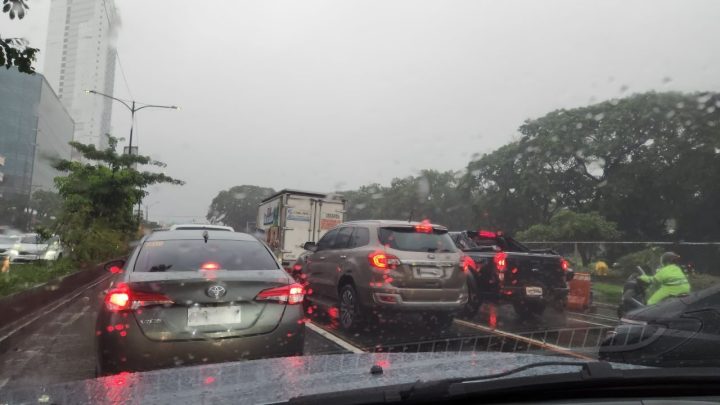
Traffic jams are bound to happen during a downpour. This safety tip touches on your knowledge of your route to avoid potential gridlock, to be able to find alternate routes, and most importantly, to avoid having to traverse flood-prone or already-flooded streets and roads.
Open manholes, potholes, and children playing in the rain with the potential to dart in front of your vehicle are all important things to know about the routes that you would choose to take, and taking these into account can ultimately provide you a great deal of safety during the rains.
Do NOT use your hazard lights unless you have an emergency
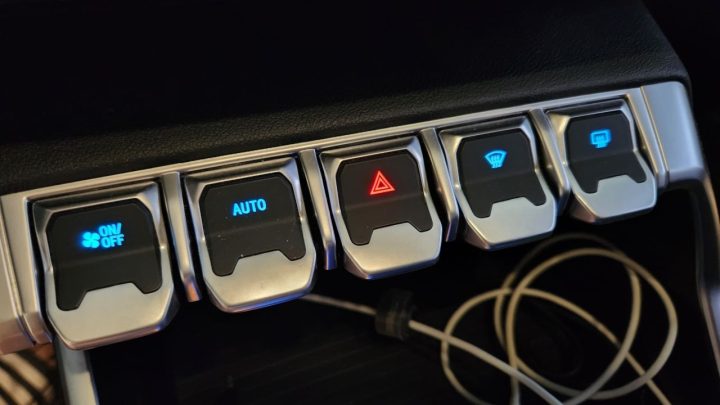
For the love of all that is holy, do NOT turn your hazard lights on in the event of rain!
There only main reasons to use them are if you are totally stopped in an immobile vehicle, and second, during an emergency. Your hazard lights are NOT to be used when it is raining, and no, don’t say that it’s for people to see you. It can only confuse people because, in the event that you need to signal for a turn, the hazards negate the blinking signal light so your fellow motorists will have no idea where you’re going to turn into.
Besides, that’s what your lights (the ones that we mentioned in the first safety tip) are for.
Gas off if you start hydroplaning
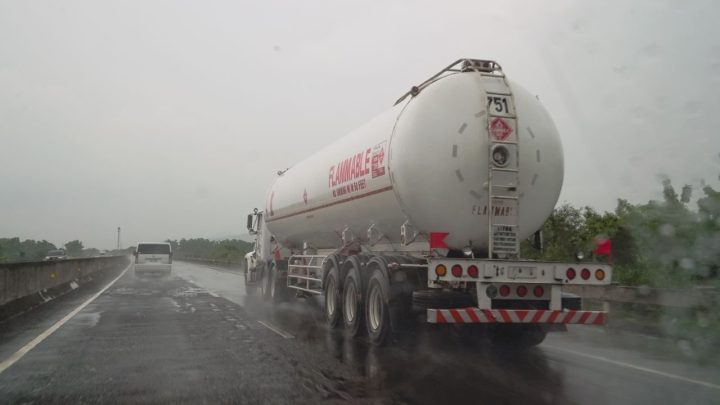
In the most unfortunate and harrowing event that your vehicle starts to hydroplane – that is lose traction and start to slide in an untoward direction – take your foot off the gas and remember to NEVER slam on the brakes. Instead, very gently steer to correct and turn the way you want to. Do not use any sudden, abrupt, or violent input on the steering wheel or the brake pedal, just keep calm and again, steer to correct very very gently.
If you’ve come this far into this guide, now you’ll see how this specific safety tip ties into the one regarding safe distance and avoiding speeding. Good on you, mate!
When in doubt, don’t drive

Personally, this is a piece of driving advice that this author always gives. If something feels wrong or if something seems amiss, if you are, ultimately, in doubt, then don’t drive.
Having apprehensions and a lack of basic, bare minimum confidence is most detrimental to one’s ability to drive. With the multiplied dangers of having to drive in the rain, you’ll have to have your wits – and your guts – about you, and along with your full concentration and ability to kick over-confidence out the door, then that gives you a good chance of navigating your way through the rain in the safest way possible.
If it can’t be helped, then maybe ask for someone to drive for you, take public transport, or leave your vehicle somewhere safe and carpool. There is merit in this saying, so again, “When in doubt, don’t”.
–
We do hope these safety tips can and will help you on your way when you find yourself having to drive in the rain. Remember that driving isn’t simply being able to operate a motor vehicle. The mere fact that you have a license means that you are aware of what is safe and unsafe to do while driving, and whether it is under the sun or rain, it’s simple tips like this that should remind us that driving safely for ourselves and everyone around us is our responsibility.
That said, keep your eyes on the road, be alert, and do be safe out there.


